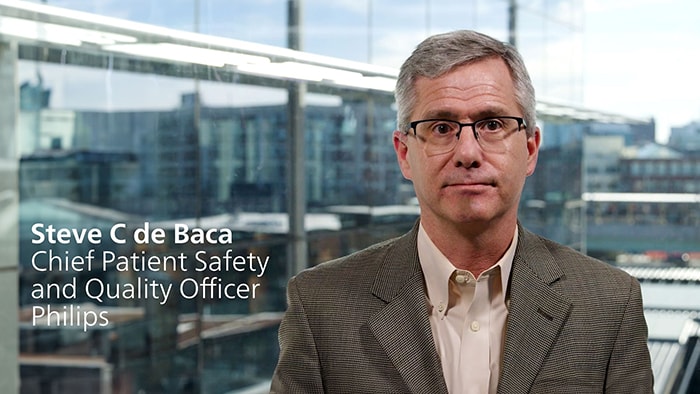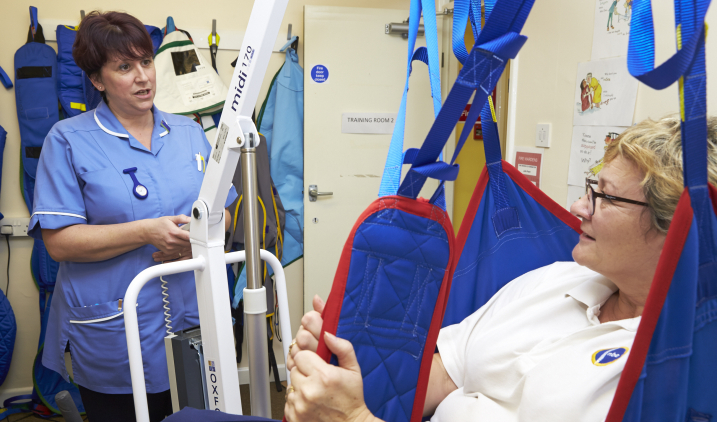Top Duties of a Medical Safety And Security Officer in Modern Health Care
In the developing landscape of modern healthcare, the role of a Professional Safety and security Police officer has actually ended up being progressively crucial. From developing comprehensive safety and security methods to promoting a culture of safety within medical care groups, their influence is profound.
Threat Analysis and Administration

The CSO teams up with multidisciplinary groups to gather data on incidents and near misses out on, promoting a society of transparency and continuous renovation. By assessing patterns and patterns, the CSO can identify locations needing intervention, inevitably lowering the probability of unfavorable events. The CSO makes sure compliance with governing standards and standards, which serve to boost individual safety and lessen liability threats.
Efficient interaction is important; the CSO must communicate risk searchings for to stakeholders, including health care administrators, carriers, and clients. Furthermore, the CSO has to stay abreast of emerging threats related to new modern technologies and therapy modalities, adapting threat monitoring techniques appropriately. Inevitably, by fostering an environment of positive threat monitoring, the Clinical Security Policeman adds dramatically to the overall safety and high quality of treatment provided within medical care setups.
Creating Safety Protocols

In partnership with multidisciplinary groups, the Professional Safety and security Officer evaluates data from occurrence records and take the chance of analyses to inform protocol development. This consists of developing clear, workable treatments for numerous circumstances, such as infection control, drug management, and emergency response. Ensuring that protocols are not only effective but also practical is important; they should be quickly comprehended and integrated into daily operations.
Furthermore, the Clinical Safety and security Police officer continues to be upgraded on the current improvements in security steps and healthcare technologies, adjusting methods appropriately. Routine reviews and updates of these protocols are essential to guarantee they stay reliable and appropriate in dealing with arising threats. Eventually, well-developed safety and security procedures act as a structure for a society of safety, cultivating an atmosphere where client treatment is focused on and risks are methodically reduced.
Conducting Educating Sessions
While safety and security procedures provide the structure for risk monitoring, carrying out effective training sessions is necessary to guarantee that all medical care personnel are competent in these methods. A Medical Safety and security Policeman plays a crucial function in creating and performing thorough training programs tailored to the details needs of numerous teams within the health care setup. This includes arranging workshops, workshops, and hands-on training that deal with existing safety requirements, emergency situation procedures, and the usage of safety devices.
In Addition, the Clinical Safety Policeman need to analyze the knowledge gaps among article source personnel participants, making certain that training sessions are pertinent and engaging. Employing a mix of training techniques, such as interactive simulations and study, can improve understanding and retention. Clinical safety officer. Regularly scheduled training refreshers also bolster staff readiness and adaptability to evolving safety protocols
Furthermore, fostering a culture of safety and security within the company is critical. The Professional Safety and security Police officer must motivate open dialogue and feedback during training sessions, permitting team to voice worries and share experiences. Eventually, well-conducted training sessions equip healthcare professionals to react successfully to prospective risks, fostering a more secure setting for both clients and staff.
Surveillance Conformity Specifications
Keeping track of compliance criteria is important my latest blog post to the role of a Clinical Safety and security Policeman, ensuring that all safety and security procedures are consistently followed across the healthcare center. This responsibility entails routine assessments of scientific practices, plans, and procedures to straighten them with recognized regulatory and business requirements.
The Professional Security Officer need to conduct methodical audits and reviews to recognize potential spaces in compliance, promoting a proactive method to patient safety and security. By implementing durable surveillance systems, the policeman can properly track adherence to safety procedures and rapidly deal with any type of deviations.
Furthermore, the Professional Safety Policeman teams up with various departments to make sure that all employee are conscious of and recognize conformity requirements. This includes examining case reports, assessing danger monitoring strategies, and providing comments to enhance techniques.
In addition, the officer should stay updated on progressing medical care laws and standards, ensuring that the facility adapts accordingly. By cultivating a culture of responsibility, the Medical Security Policeman plays a vital duty in boosting the total safety and security and top quality of treatment provided to individuals, eventually contributing to better health outcomes and business honesty.

Promoting a Society of Safety And Security
Creating a culture of safety and security within a healthcare facility is necessary for improving and decreasing risks client treatment. A Professional Safety And Security Officer (CSO) plays a critical function in cultivating this setting by advertising accountability, transparency, and continuous enhancement among personnel in any way degrees. The CSO implements and develops safety protocols that encourage open communication and reporting of events without worry of .
To properly advertise a society of safety and security, the CSO needs to participate in routine training sessions that highlight the value of individual security and danger administration. These sessions ought to include real-life case studies and simulations to aid team identify prospective risks and understand their responsibilities in mitigating them. In addition, the CSO needs to assist in interdisciplinary partnership, guaranteeing that all departments interact to deal with safety concerns adequately.
Routine assessments and feedback devices are crucial components of this society. The CSO needs to evaluate safety information, determine trends, and share searchings for with the entire company to drive enhancement initiatives. By focusing on security, the CSO grows an atmosphere where staff really feel empowered to support for their individuals, leading to boosted care top quality and eventually, far better health and top article wellness outcomes.
Final Thought
In verdict, the role of a Clinical Safety Policeman is essential to promoting a risk-free health care setting. Ultimately, the initiatives of Clinical Safety Officers ensure that safety remains a paramount focus within health care setups.
Inevitably, by cultivating an environment of positive danger administration, the Medical Security Officer contributes dramatically to the total safety and security and high quality of care delivered within medical care setups.
Moreover, the Scientific Security Officer continues to be upgraded on the newest developments in safety actions and health care innovations, adapting methods appropriately. Ultimately, strong security protocols offer as a foundation for a society of security, fostering a setting where individual care is focused on and risks are methodically alleviated.
To effectively advertise a culture of safety and security, the CSO should involve in routine training sessions that emphasize the value of client safety and security and risk monitoring (Clinical safety officer). Eventually, the initiatives of Medical Safety and security Policemans make certain that security continues to be a critical emphasis within healthcare setups
Comments on “What to Expect from a Clinical Safety Officer in Managing Clinical Risk and Safety Protocols”